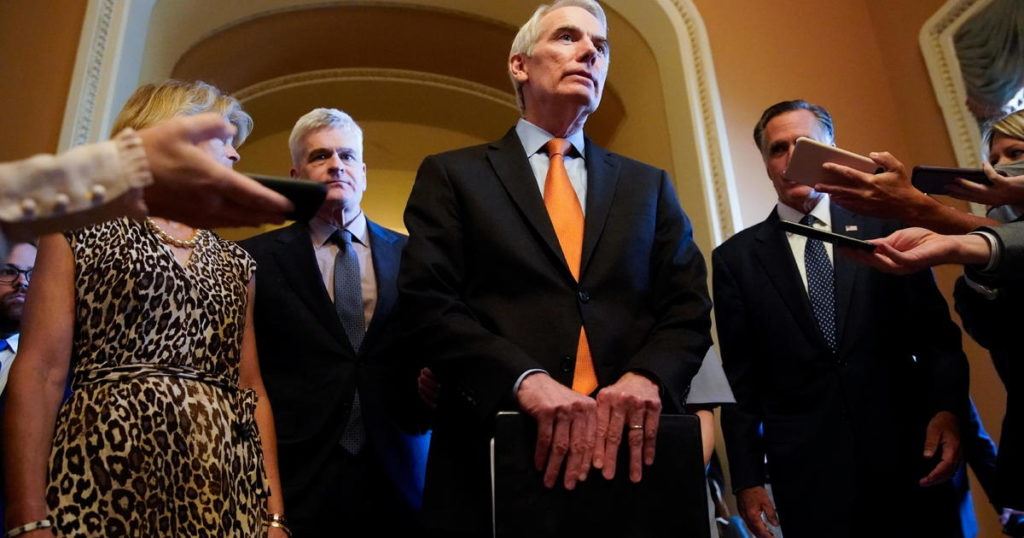
Photo courtesy of CBS News
Which infrastructure bill are we talking about?
Following in the footsteps of the $1 trillion Infrastructure Investment and Jobs Act is a $3.5 trillion “soft infrastructure” bill that has sustained the contentious climate in the Senate. The legislation aims to provide Americans with a number of benefits in the economic and quality of life spheres – namely healthcare, education, and climate provisions. As it stands now, the bill will include:
- Expanding Medicare to cover dental, hearing, and vision care;
- Offering universal prekindergarten and two free years of community college;
- And pushing utilities to generate 80% of the nation’s electricity from clean sources by the end of the decade
Other benefits are still being considered, or have loosely been proposed as components, such as:
- Raising taxes on companies and high-income households (to cover the cost of the bill);
- Replenishing the Restaurant Revitalization Fund;
- And extending sick paid leave
What has happened?
The past couple days have been particularly heated as Democrats are not only battling with Republicans, but are now also engaging in internal battles as splintering worsens. In a somewhat surprising turn of events, the House narrowly passed a measure that approves the budget blueprint for the $3.5 trillion bill, and simultaneously locks in a date to vote on the $1 trillion bill in September. The passing of this measure effectively ends the standoff between centrist and liberal Democrats against party leadership.
Why is this significant?
Aside from offering life-saving benefits to individuals and sectors still suffering and struggling due to the pandemic, such as those working in the leisure and hospitality industries, the House’s measure is significant for 3 other reasons:
1. The reconciliation process can now begin
Once the budget framework is passed, per the reconciliation process, Democrats are now free to pass the package in the Senate without GOP support as long as 50 senators in the Democratic caucus are in support. Given the Senate just passed the same budget blueprint at the beginning of this month, and lawmakers are already drafting legislation details, it looks as though the process is moving quite quickly – which means benefits will be reaching the public sooner.
2. The Democratic Party, already splintered, may come out on the bottom
Although House Speaker Nancy Pelosi (D-CA) has engaged in a heated standoff with 10 centrist Democrats over the order in which votes for the bills should be held – with Pelosi ensuring that the House won’t vote on the first bill until the second has passed the Senate and the centrist Democrats wanting the opposite – the party as a whole seems to be embarking on even more uncertain ground.
The agreement effectively makes it so votes for both bills will only be weeks apart, which will affect the party’s leverage during negotiations unless it can finalize the budget package before the first bill’s deadline. Liberal Democrats have already gestured that they will oppose the first bill in the House if the Senate has not yet passed the second bill; meanwhile, Republicans have stated that they strongly object both the reconciliation process and the actual price of the second bill – both aspects that are not subject to change.
Therefore, the agreement has the potential to deeply affect the power dynamics during negotiations, which were already going to be fierce. September 15th has been set as the deadline for all committees to finalize their respective portions of the budget bill, but it looks as though securing an agreement from all 50 members of the Senate Democratic caucus – not to mention the majority of the whole House Democratic caucus – will be much harder than anticipated.
3. September will test the strength of bipartisan support
The September 15th deadline is but 1 of 3 major deadlines all packed into one month. The House must vote on the first infrastructure bill by September 27th. Lawmakers must also either extend current funding or start drafting and passing entirely new spending bills by the end of September in order to avoid a partial government shutdown. Additionally, Congress will need to quickly figure out how to raise the federal borrowing limit or debt ceiling before money has dried up; though the debt limit was reinstated at the start of this month, following the expiration of a deal to suspend it, the government only has a couple months to address this situation.
Founded by attorneys Andreas Koutsoudakis and Michael Iakovou, KI Legal focuses on guiding companies and businesses throughout the entire legal spectrum as it relates to their business including day-to-day operations and compliance, litigation and transactional matters.
Connect with Andreas Koutsoudakis on LinkedIn.
Connect with Michael Iakovou on LinkedIn.
This information is the most up to date news available as of the date posted. Please be advised that any information posted on the KI Legal Blog or Social Channels is being supplied for informational purposes only and is subject to change at any time. For more information, and clarity surrounding your individual organization or current situation, contact a member of the KI Legal team, or fill out a new client intake form.
The post $3.5 Trillion Infrastructure Bill Budget Blueprint Passed by House appeared first on KI Legal.
